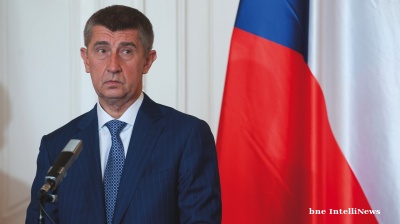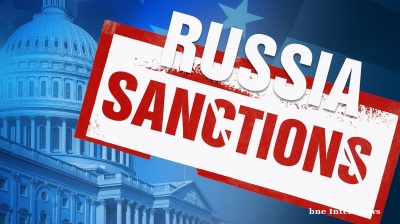Investors and policymakers finished the International Monetary Fund (IMF), World Bank annual general meetings in October on a more positive note than expected.
Accommodative central bank policies and the recent US-China truce should help risk sentiment. Most participants believed that fiscal stimulus was needed, but no consensus was reached in terms of which countries would deliver it.
As we argue in our Capital Flows Report, this environment supports a modest pickup in flows to EM. Portfolio debt flows rose in several EMs despite a lower growth differential to developed markets (Exhibits 1 and 2).
Attractive real rates explain some of these dynamics (Exhibit 3). In this note, we take a closer look at select countries in the CEEMEA region: Russia, South Africa, Turkey, and Ukraine.
During the meetings, the IMF’s proposal for an integrated policy framework (IPF) was much debated by authorities but attracted surprisingly little attention from investors. Once adopted, it could be an important departure from the IMF’s historically orthodox advice on capital flows. The IPF would allow for a more liberal use of FX and capital flow management techniques in countries with market dislocations (e.g. dollarization) and shallow domestic markets. Some EM central banks worried that the IPF could undermine their credibility and intensify political pressure to deliver growth.

Russia’s conservative central bank and continued fiscal prudence remain attractive to investors. The country continues to benefit from exceptionally low macro vulnerabilities, and the breakeven oil price for both external and fiscal balance is low.Investors appear more comfortable with the sanctions risk, as renewed inflows into domestically-issued government debt show. While we believe that the OFZ market is unlikely to be targeted in the near term, we are paying close attention to whether a new bill could consolidate current initiatives (DAASKA and DETER) and whether additional measures will be introduced into the NDAA during conference.
On South Africa, our key takeaway is that the government is likely to announce sizable spending cuts in the MTBPS on October 30, and perhaps a plan to transfer ZAR250 bn of Eskom’s debt to the central government. Moody’s will likely need some time to react and, as a result, there will be no rating or outlook decision on November 1. At the same time, Eskom's situation is far from clear. We expect the authorities to release a restructuring plan for the struggling utility company before the MTBPS date. The SARB remains the bright spot. Its credibility is undisputed, and the central bank is committed to a flexible exchange rate, while inflation effectively lies in the middle of the 3-6% target band (Exhibit 4).

Regarding Turkey, the key takeaway is that investors expect no further escalation of tensions with the US. Normalization of geopolitical risks together with a moderately improved growth outlook for 2020 (most expect 2-3% growth in 2020 compared to near zero in 2019) should allow for some capital inflows. Most observers expect that growth concerns will prompt the CBRT to cut interest rates once more on October 24 (100-150bps), despite intensified depreciation pressure on the TRY (which is likely sanctions related).
Little clarity emerged regarding Ukraine’s IMF program. We still believe that an agreement is possible before the end of the year, and the IMF will visit Kyiv again in November. However, a court decision on PrivatBank has been postponed once again, and the issue represents a key sticking point in the negotiations. Ukraine has enjoyed a surge of non-resident flows in domestically issued debt since the beginning of the year, and its immediate repayment needs are covered for the coming months (Exhibit 6).
We expect moderate capital flows to EM to continue in the context of accommodative monetary policy, a possible resolution of the trade conflict between the US and China, and yield-seeking behavior from investors. Nevertheless, geopolitical factors will play an increasingly important role for the outlook.

Opinion

COMMENT: ANO’s election win to see looser Czech fiscal policy, firmer monetary stance
The victory of the populist, eurosceptic ANO party in Czechia’s parliamentary election on October 6 will likely usher in a looser fiscal stance that supports growth and reinforces the Czech National Bank’s recent hawkish shift.

COMMENT: Ukraine's drone attacks on Russian refineries have probably reduced throughput by 30.4%, less than headline figures suggest
Ukraine has been hitting Russian refineries and caused a fuel crisis that has spead across multiple regions. The headline figure is that oil refining has been reduced by 38% since August, but digging into it and the reduction is likely less.

MACRO ADVISORY: The unintended consequences of Western sanctions
Since 2014, Western nations have hit Russia with a total of 26,655 sanctions (to mid-September 2025), with 23,960 coming after February 2022. The largest target group, with 13,611 sanctions, is state officials, business owners, and oligarchs.

PANNIER: Few will mourn passing of Turkmen Iron Lady Atajanova and Uzbek Grey Cardinal Jurabekov
Their deaths seem to have been conveniently overlooked for the most part by the authorities of today.
_Cropped_1759411324.jpg)



